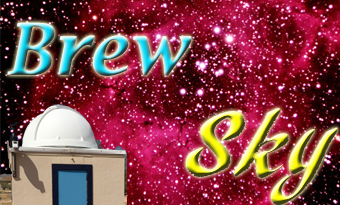| Common Name | Horsehead Nebula | |||||||||||||||||||||||||||||||||||||||||||||
| Formal Name | Barnard 33 | |||||||||||||||||||||||||||||||||||||||||||||
| Date | 2/5-7/2016 | |||||||||||||||||||||||||||||||||||||||||||||
| Constellation | Orion | |||||||||||||||||||||||||||||||||||||||||||||
| Location | BrewSky Observatory, Casa Grande, AZ | |||||||||||||||||||||||||||||||||||||||||||||
| Equipment | Celestron Edge 11 on Paramount MX, SBig STF8300M Camera/Filter Wheel/STi guider | |||||||||||||||||||||||||||||||||||||||||||||
| Temperature | −15°C | |||||||||||||||||||||||||||||||||||||||||||||
| Exposures |
|
|||||||||||||||||||||||||||||||||||||||||||||
| Processing | Calibrated in Maxim, Aligned/Stacked/Processed in PixInsight. Images were done in 2x2 bin, then drizzled in PI. Synthetic Lum by integrating RGB. Note: star spikes are due to grease trace on corrector plate. |
|||||||||||||||||||||||||||||||||||||||||||||
| Notes | Located 706 parsecs (1500 lightyears) away, IC 434 is the red emission nebula behind the head.
From Wikipedia: The dark cloud of dust and gas is a region in the Orion Molecular Cloud Complex where star formation is taking place. This stellar nursery, as it is known, can contain over 100 known kinds of organic and inorganic gases as well as dust; some of the latter is made up of large and complex organic molecules. The red or pinkish glow originates from hydrogen gas predominantly behind the nebula, ionized by the nearby bright star Sigma Orionis. Magnetic fields channel the gases leaving the nebula into streams, shown as streaks in the background glow. A glowing strip of hydrogen gas marks the edge of the massive cloud, and the densities of nearby stars are noticeably different on either side. The heavy concentrations of dust in the Horsehead Nebula region and neighboring Orion Nebula are localized, resulting in alternating sections of nearly complete opacity and transparency. The darkness of the Horsehead is caused mostly by thick dust blocking the light of stars behind it. The lower part of the Horseheads neck casts a shadow to the left. The visible dark nebula emerging from the gaseous complex is an active site of the formation of low-mass stars. Bright spots in the Horsehead Nebula's base are young stars just in the process of forming. |

